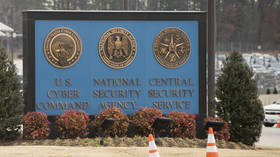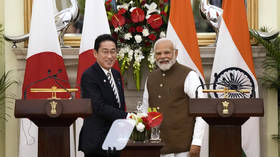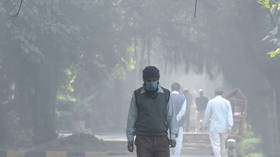Here's the real reasons why US senators backed India in its border dispute with China
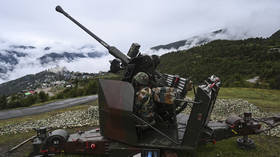
Washington is inserting itself into the ongoing Sino-Indian border conflict in an effort to both win political points with India while further skewering China. The recent bi-partisan Senate Resolution introduced in the upper chamber reaffirms US recognition of the Arunachal Pradesh border state as India’s sovereign territory.
The proposed resolution – co-sponsored by Senators John Cornyn (R-Texas), Bill Haggerty (R-Tennessee) and Jeff Merkley (D-Oregon) – is another attack on China, which the annual US threat perception report recently identified as Washington’s main adversary in the post-Cold War era. The title of the resolution – “Reaffirming the state of Arunachal Pradesh as Indian territory and condemning the People’s Republic of China’s provocations in South Asia” – sums up the gist of the legislative bid that clearly states the US side in the matter. It upholds India’s sovereign rights over Arunachal, the largest and least populous state in the north-east, which China claims to be an extension of southern Tibet, or “Zangnan” in Mandarin.
Arunachal Pradesh, formed from British India’s North-East Frontier Agency (NEFA), became a federally-governed union territory in 1972 and a full-fledged state in 1987. China had taken exception to the statehood status.
India is currently making a massive infrastructure push in Arunachal, stemming from its intent to counter China’s aggressive ways. The humiliating 1962 defeat in the Sino-Indian war spurred New Delhi’s bid to integrate the backward tribal-majority state, and Indian defense experts maintain that the infrastructure push to the key border state is aimed at cocking a snook at China’s claim over Arunachal.
Who are the US Senators behind the resolution?
Markley is the co-chair of the Congressional Executive Commission on China, while Haggerty is a former US ambassador to Japan. Both are members of the Senate Foreign Relations Committee (SFRC). Cornyn is the co-founder and co-chair of the Senate India Caucus, a former Senate majority whip, and a member of the Senate Select Committee on Intelligence. The trio are seen to be pro-India and anti-China at a time when the battle lines between the US and its Asian adversary have been drawn in Washington’s one-upmanship to create a unipolar world.
The introduction of the resolution is the first step. Now, it needs to be referred to the SFRC, where it is likely to be taken up by chairman Bob Menendez, a Democrat Senator from New Jersey. If the panel approves the resolution, then the Senate will deliberate upon it either as a standalone move or a part of a larger legislation, which is likely to aggravate Sino-US ties that have, of late, hit rock bottom over a raft of issues.
What does the US endorsement mean?
Washington has been courting India – a Quad ally for maritime security in the Indo-Pacific – to keep what it perceives as Beijing’s expansionist policies at bay. The resolution is consistent with Washington’s foreign policy that officially recognizes Arunachal as an integral part of India.
Earlier, the US had unequivocally condemned China for its military aggression on Indian soil following the 2020-2021 border skirmishes in eastern Ladakh, where at least 20 Indian Army personnel lost their lives.
The resolution for the first time goes into great lengths to reiterate India’s stance on Arunachal’s border demarcation as per the McMahon Line, which China does not accept.
For the uninitiated, Sir Henry McMahon, who was the foreign secretary of the then British government, had determined the McMahon Line as the 1,126km line of demarcation between India and China in 1914 in the eastern Himalayas at the time, when Tibet was an independent country until it was taken over by the Chinese army in 1950 and incorporated into the country.
The McMahon line became the basis of the Line of Actual Control (LAC), another demarcation line set after the 1962 Sino-Indian war, which extends further west.
There are three distinct areas in the Sino-Indian border, where Ladakh is the western sector. India’s hill states of Himachal Pradesh and Uttarakhand are the middle sector and the eastern sector comprises Arunachal, which is the biggest bone of contention.
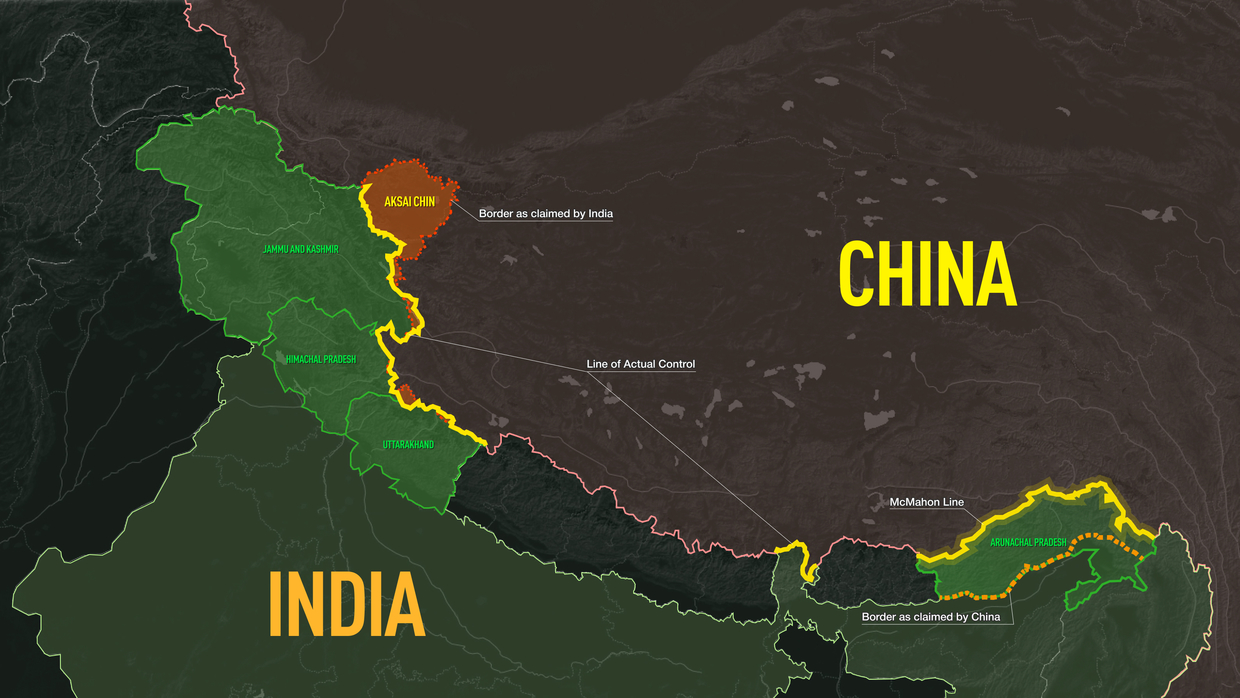
Beijing only recognizes the LAC in the western sector of the borderland between India’s Ladakh and China.
It considers Arunachal to be its territory and had occupied large parts of it during the 1962 war as a rightful claimant to an extension of southern Tibet. China’s claims over Arunachal are countered by India’s demand over the plateau of Aksai Chin, which is adjacent to Ladakh.
Part of Arunachal’s historic significance stems from the Tawang monastery, the birthplace of the sixth Dalai Lama, Tsangyang Gyatso. China has consistently lodged strong protests with India against the visit of the 14th Dalai Lama to Tawang, as Beijing considers him a “splittist” over the Tibetan independence issue. Beijing also refused to grant visas to Arunachal residents for travel to China.
Amid these territorial angularities between two Asian rivals, Washington took a partisan stand by rebuking Beijing’s position.
Washington’s deeper motive?
It is abundantly clear that the US, which is known for its foreign policy optics, always puts its own interests above anybody else’s under the pretext of upholding democratic values and taking an aim at authoritarian regimes. Washington has been employing a carrot-and-stick policy to wean India off its all-weather ally Russia since Moscow started its military operation in Ukraine that entered its second year on February 24.
The carefully-worded resolution stops short of naming Russia but gives away enough broad hints to drive home the point about who is in Washington’s line of fire. For instance, the US hailed India’s defense modernization, including its diversification “away from countries that fail to respect the sovereignty and territorial integrity of other nations.”
The US also lauded India for infrastructure upgrades in the remote state such as improvement in border infrastructure, connectivity and mobility, and energy security. And much like in Nepal – a buffer state between India and China, the US made lofty commitments in the resolution such as pledging generous financial assistance to Arunachal, including through the State Department and United States Agency for International Development, popularly known as USAID, and “using funding mechanisms such as the Countering PRC Influence Fund.”
The US largesse is rooted in the US-India bilateral partnership, such as the recent initiative on critical and emerging technologies, known as iCET, which appears to be the bedrock of bilateral cooperation in diverse fields such as innovation, defense, science, technology and space. The resolution also cited “enhancing our multilateral cooperation with India through the Quad, the East Asia Summit alongside our partners in the Association of Southeast Asian Nations (ASEAN), and other international fora.”
New Delhi, which is pursuing an aggressive “India First” policy since Prime Minister Narendra Modi came to power in 2014, is yet to react to this spontaneous show of support.
Pitting India against China
The US, whose foreign policy has often drawn flak for misadventures in troubled global hotspots such as Vietnam, Afghanistan, Pakistan, Iran, Iraq and Libya, is opening a new front in volatile South Asia to put its stamp of authority on it. The resolution’s wording appears to be a ploy to win over India’s hearts and minds. It asserts that Arunachal is an “integral part of India” and supports New Delhi’s “sovereignty and territorial integrity,” while condemning China for the “use of military force” to change the status quo at the LAC. It blames China for “its increasingly aggressive and expansionist policies” in an apparent effort to get under Beijing’s skin.
The resolution refers to a December 2021 map of Arunachal that was published by China’s ministry of civil affairs, where 15 geographic features in “Zangnan” were changed overnight into Mandarin as a marker to geostrategic dominance. These features were “eight residential settlements, four mountain peaks, two rivers, and one mountain pass, as well as the names of the administrative regions where each of these are located.” It also referred to Yangtse, where the latest skirmish – the biggest in six years – took place on December 9, 2022 between the Indian Army and the People’s Liberation Army (PLA). Yangtse, like most parts of Arunachal, is a sparsely populated place located barely five kilometers away from a village on the Chinese side.
The resolution indicts China for constructing two villages close to the LAC in Arunachal and also accuses it of encroaching upon neighboring Bhutanese territory in the eastern sector. It also accuses Beijing of “provocative moves” regarding Galwan and of “increasing troop deployments, building new infrastructure in contested areas, and harassing Indian patrols, particularly around the Depsang Plains, Galwan Valley, Hot Springs, and Pangong Lake.”
Why is the US courting India?
It’s all about the economy. Washington seeks to put New Delhi at the heart of its economic agenda. The US modus operandi is not too complex. It seeks to gain India’s sympathy by cementing ties with one of the world’s fastest-growing economies amid tensions with China and global trade disruptions due to the Ukraine conflict.
The US wants to move away from its reliance on Chinese goods while also having to contend with soaring food and energy prices as a direct fallout of the Ukraine crisis. The Biden administration is looking at India as a dependable ally to weather the economic uncertainties triggered by a changing global order.
India occupies one of the top slots in the US’s “friendshoring” strategy amid Washington’s pivot away from nations that could destabilize its supply chains. Apple’s switch of iPhone manufacturing from China to India is a case in point. The US aims to tap into India’s demographic dividend, as its share of the working-age population is estimated above 50% and a significant percentage of Indians are proficient in English. India’s exports to the US account for over 75% making the Americans its biggest trading partner.
However, the country scores poorly in the ease of doing business. A lack of adequate infrastructure and government red tape make foreign investments a growing challenge to shift manufacturing bases from China and other business-friendly manufacturing nations.
Unless the pros outweigh the cons, the US could look at wooing India for a rainy day, when “friendshoring” is likely to become imperative to extricate its trade ties from China. If that moment doesn’t emerge, then Arunachal-like optics will only lend a feelgood factor to New Delhi to chart its own course regarding the much-touted “India First” policy. Consequently, India’s new found foreign policy outreach could be given a severe loyalty test if the conflict between US-led Western nations and the Russia-China-Iran axis intensifies. In that scenario, New Delhi can ill afford to be a casual bystander and a fence-sitter. The US hopes India will err on the side of caution, and choose Washington to pack a powerful economic punch, despite its time-tested alliance with Russia.
The statements, views and opinions expressed in this column are solely those of the author and do not necessarily represent those of RT.
